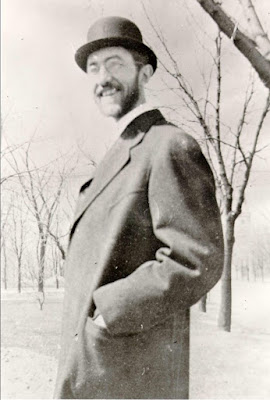According to
Who’s Who in Engineering (John W. Leonard Corporation, 1922), Wilbert W. Henkelman was born in Sandusky, Ohio on July 31, 1892 to Henry and Amelia Henkelman. In 1915 he earned a bachelor’s degree in Civil Engineering from the Ohio State University. During World War I, he served as a Corporal with the 1st Replacement Regiment Engineers. He married Leora Holzaepfel in 1920.
In his long career, Wilbert Henkelman worked as an engineer for several different communities, including Huron, Willard and Vermilion. From 1939 to 1944, he was the District Deputy Director for the State Department of Highways for Huron and Erie Counties, and for a number of years was associated with the Judson Engineering Company.
After the building of the Commercial Banking and Trust Company in Sandusky in the 1920s, Mr. Henkelman obtained a bound booklet containing 39 photographs of the bank under construction. He donated the booklet to the historical collections of the Sandusky Library. Below are two of the photographs of the historic building project.
The first photo was taken June 15, 1923:
The second photograph was taken November 28, 1923:
Because of Mr. Henkelman's foresight, we can view the progress of the building of the Commercial Banking and Trust Company, now home to Vita Sandusky. The interior details of the building including chandeliers, marble floors, and copper sculpted ceiling can still be seen today.
The July 31, 1962 issue of the Sandusky Register reported on a surprise birthday party held for Mr. Henkelman after a Huron Council Meeting.
Wilbert W. Henkelman died on February 12, 1965, following a brief illness. He had been a member of the First Congregational United Church of Christ, Ohio and American Society of Professional Engineers and Surveyors, Perseverance Lodge 329, Erie County Conservation League, and the Huron Chamber of Commerce. He was survived by his wife, two daughters and a son, seven grandchildren, and a sister. His final resting place was Oakland Cemetery in Sandusky, Ohio.

 this blog
this blog































